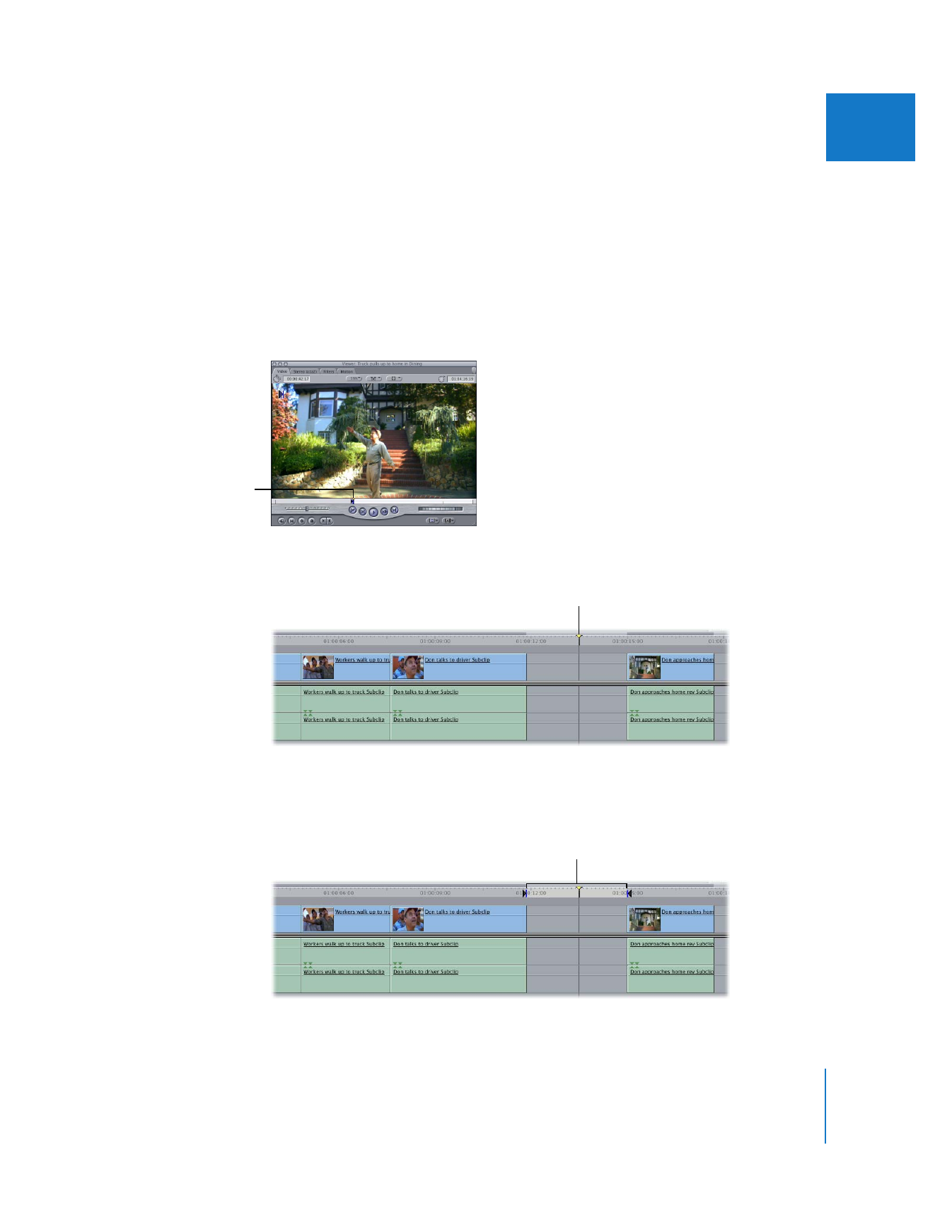
Example: Editing a Specific Clip into Your Sequence
The simplest way to perform an edit is to specify In and Out points for a clip in the
Viewer, and then specify the destination In point in your sequence by positioning the
playhead in the Canvas or Timeline:
1
Double-click a clip to open it in the Viewer. (This is your source clip.)
2
Specify In and Out points for your source clip in the Viewer.
Edit points set
Results
 Clip In and Out points
 Sequence In point
The In point of the source clip is placed at the sequence In point,
and the duration of the edit is determined by the clip In and
Out points.
 Clip In point
 Sequence In and Out points
The In point of the source clip is placed at the In point in the
sequence, and the duration of the edit is determined by the
sequence In and Out points.
 Clip In and Out points
 Sequence Out point
The Out point of the source clip is placed at the Out point of the
sequence, and the duration of the edit is determined by the clip In
and Out points.
This is known as “backtiming” an edit. You can use this method
when you want to make sure a particular frame of a clip ends at a
specific point in a sequence. For example, you can use this method
to make sure the last frame of a clip ends on a musical beat in
the Timeline.
 Clip Out point
 Sequence In and Out points
The Out point of the source clip is placed at the Out point of the
sequence, and the duration of the edit is determined by the
sequence In and Out points.
If there is no sequence In point, the Timeline playhead is used as
the In point.
Out point
In point

166
Part II
Rough Editing
3
In the Canvas or Timeline, move the playhead to the location in your sequence where
you want the clip to start (the sequence In point).
4
Now, if you do an overwrite edit, you’ll see that the duration of your clip, defined by the
In and Out points in the Viewer, has been edited into the sequence.
As you can see, defining only three points—the clip In and Out points in the Viewer
and the sequence In point in the Timeline—gives you total control of the edit
that’s performed.
Move the playhead to the
location in the sequence where
you want the clip to start.
The new clip starts
where the playhead was.

Chapter 10
Three-Point Editing
167
II